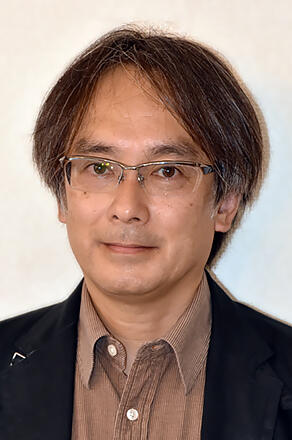
Creating novel media for creation, expression and communication to make people more creative
Laboratory on Humane Creative Interaction
Professor:NISHIMOTO Kazushi
E-mail:
[Research areas]
Media Informatics, Creativity Support
[Keywords]
Creativity mining, Informal communication media, Musical creativity support, Support by obstruction, Utilizing unused knowledge
Skills and background we are looking for in prospective students
Only one essential thing to start your research at my laboratory is a strong desire that you want to become more creative. Although no special knowledge and skills are preliminarily required, programming skills and basic knowledge on statistical tests are useful in most cases.
What you can expect to learn in this laboratory
Capabilities that you can acquire through research activities in our laboratory are: capabilities to find and to solve problems in various creative activities, to implement tools and systems for them, and to estimate their effectiveness. In particular, I expect you to acquire capabilities to create extraordinary ideas, not commonsense ideas. By acquiring these capabilities, you can become active planners, researchers and/or developers in laboratories and companies with high creativity and autonomy who can think by themselves, find valuable theme, and create practical solutions.
【Job category of graduates】 Planners, researchers and/or developers in ICT companies and Web companies
Research outline
The research objective of our laboratory is to create tools and environments that make people more creative. Please note that we are not interested in making machines creative. For example, technologies for automatic creation of patents, drawings and music are not research targets of our laboratory. We want to make human being creative. It is our belief that creation must be conducted by human being. We study how tools for human creative activities ought to be, and implement tools to make human creative activities more creative.
We are now tackling with following 5 projects:
1) Creativity mining technologies:
There are so many people who are not aware that they have some creativity. We are creating tools to find, to excavate, and to make available such latent creativities for increasing creative human resource.
2) Informal communication media:
Valuable ideas are often created in mere chats, rather than in formal meetings. We are creating informal communication media that equip with various functions to enhance creative aspects of the chat.
3) Musical creativity support:
Everybody loves music, but it is not always easy to actively enjoy music, such as playing and composing music. In order to allow everybody to express his/her own music, we are developing, for example, novel musical instruments that are not only easy to play but also sufficiently expressive to fully express human musical ideas.
4) Support by obstruction:
Conventional engineering has concentrated on making human life convenient by alleviating and eliminating barriers of human activities. However, as a result of such attempts, we are facing at a serious problem that we have been losing various abilities. In order to avoid retrogression of our intellectual and physical abilities, and to foster them, we are exploring various methods to utilize, not to eliminate, obstructions.
5) Utilizing unused knowledge:
In our everyday life, people often create various knowledge such as improvised humming, and doodling in a notebook. Although they are novel knowledge, they are seldom regarded and utilized. We are developing tools to capture such once created but immediately forgotten knowledge, to store them, and to utilize in some other knowledge creating tasks.
Key publications
- Ikuta, H., and Nishimoto, K.: Wasting “Waste” is a Waste: Gleaning Deleted Text Fragments for Use in Future Knowledge Creation, Proc. 10th Int’l. Conf. on Advances in Computer-Human Interactions, pp.193-199, 2017.
- Nishimoto, K., and Wei, J.: G-IM: An Input Method of Chinese Characters for Character Amnesia Prevention, Proc. 8th Int’l. Conf. on Advances in Computer-Human Interactions, pp.118-124, 2015.
- Oshima, C., Nishimoto, K., and Hagita, N.: A Piano Duo Support System for Parents to Lead Children to Practice Musical Performances, ACM Trans. on Multimedia Computing, Communications and Applications, Vol.3, Issue 2, Article 9, 2007.
Equipment
Various musical instruments, and facilities to record and to analyze human activities in creative tasks.
Teaching policy
Basically, research theme will not be given in a top-down manner; you are required to create it by yourself by considering what is necessary to make yourself more creative. In seminars of Master's 1st year, brainstorming for theme setting is conducted to train problem finding ability and ideation ability. In seminars of Master's 2nd year, problem solving ability and presentation skill will be trained through research progress report.
[Website] URL:https://www.jaist.ac.jp/ks/labs/knishi/